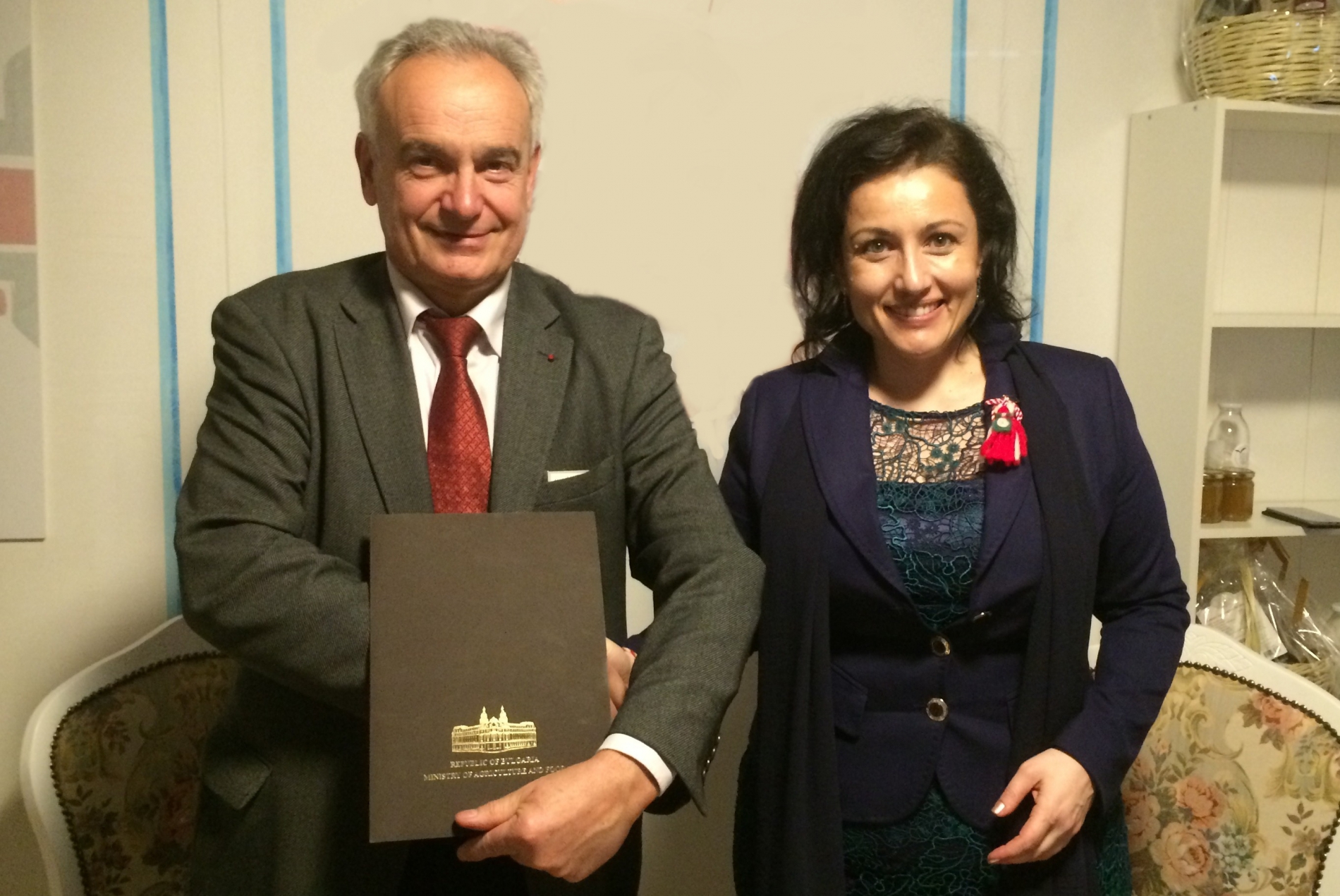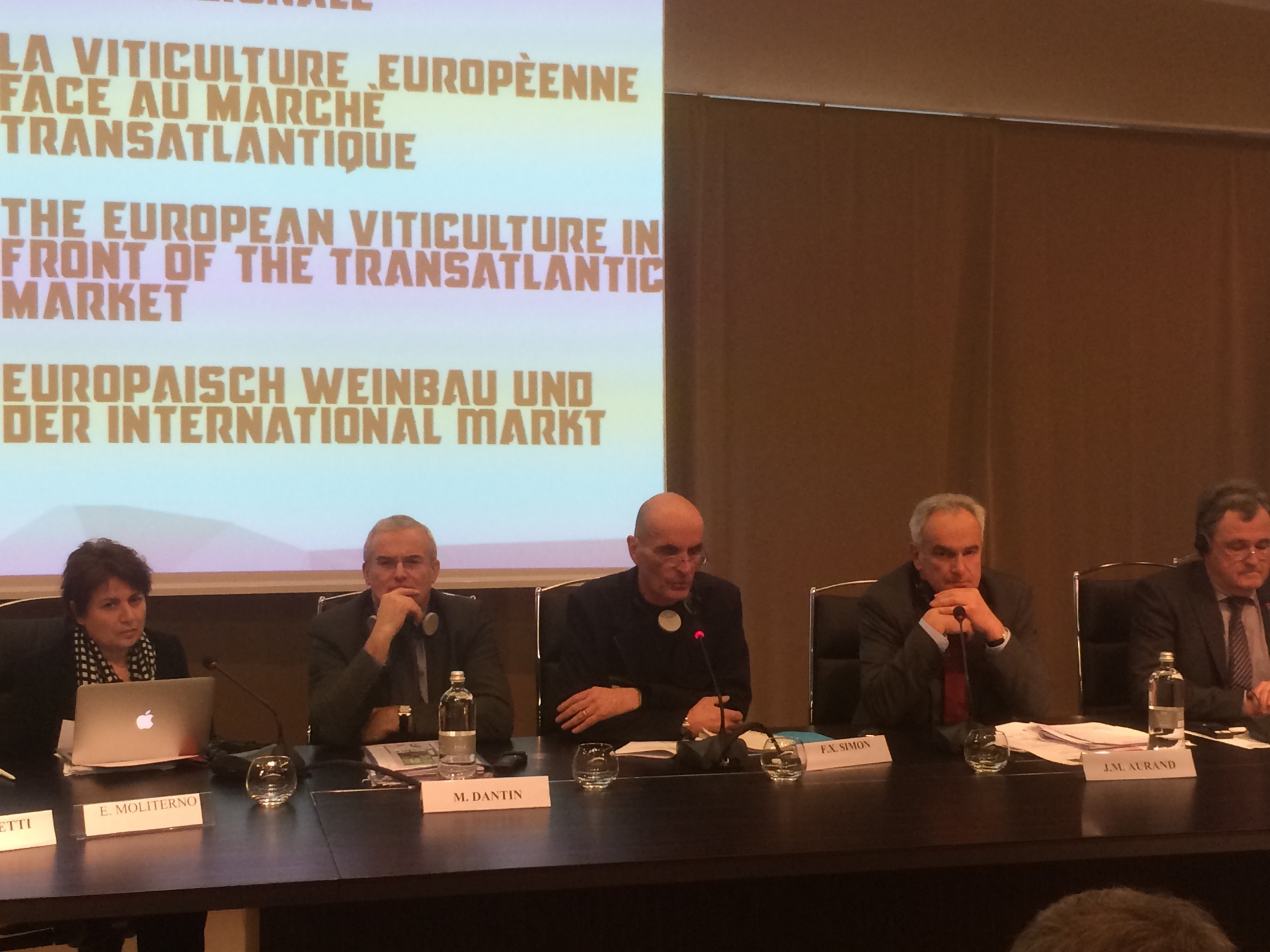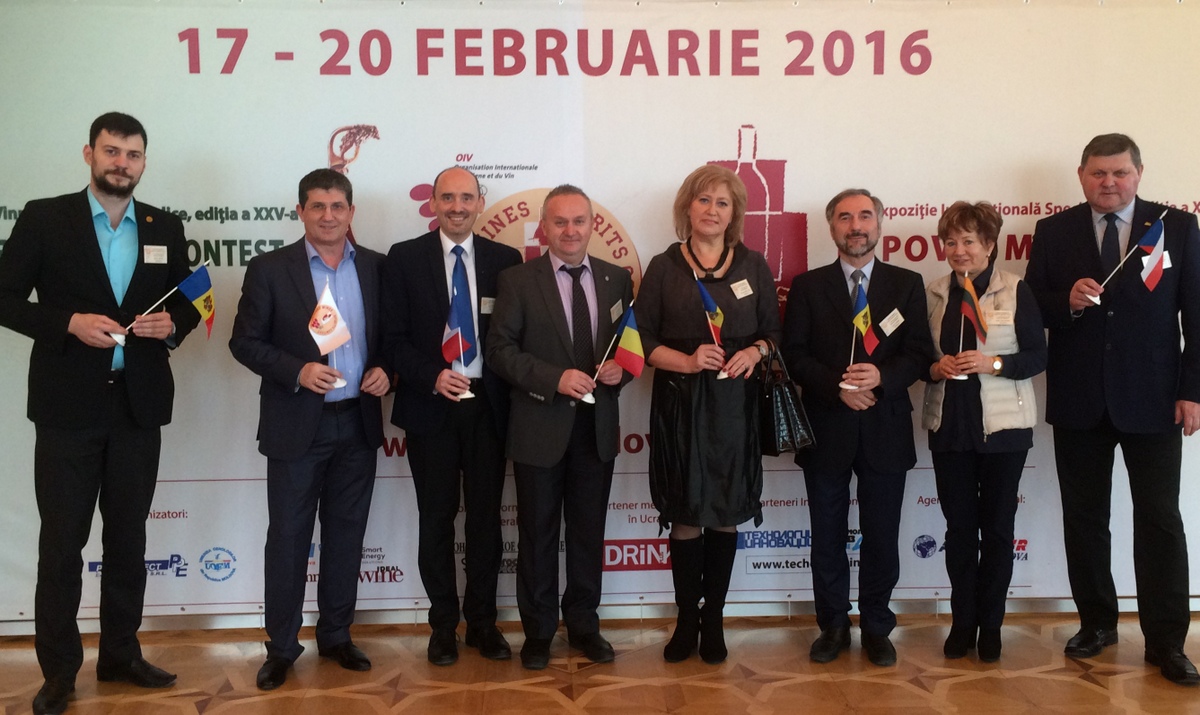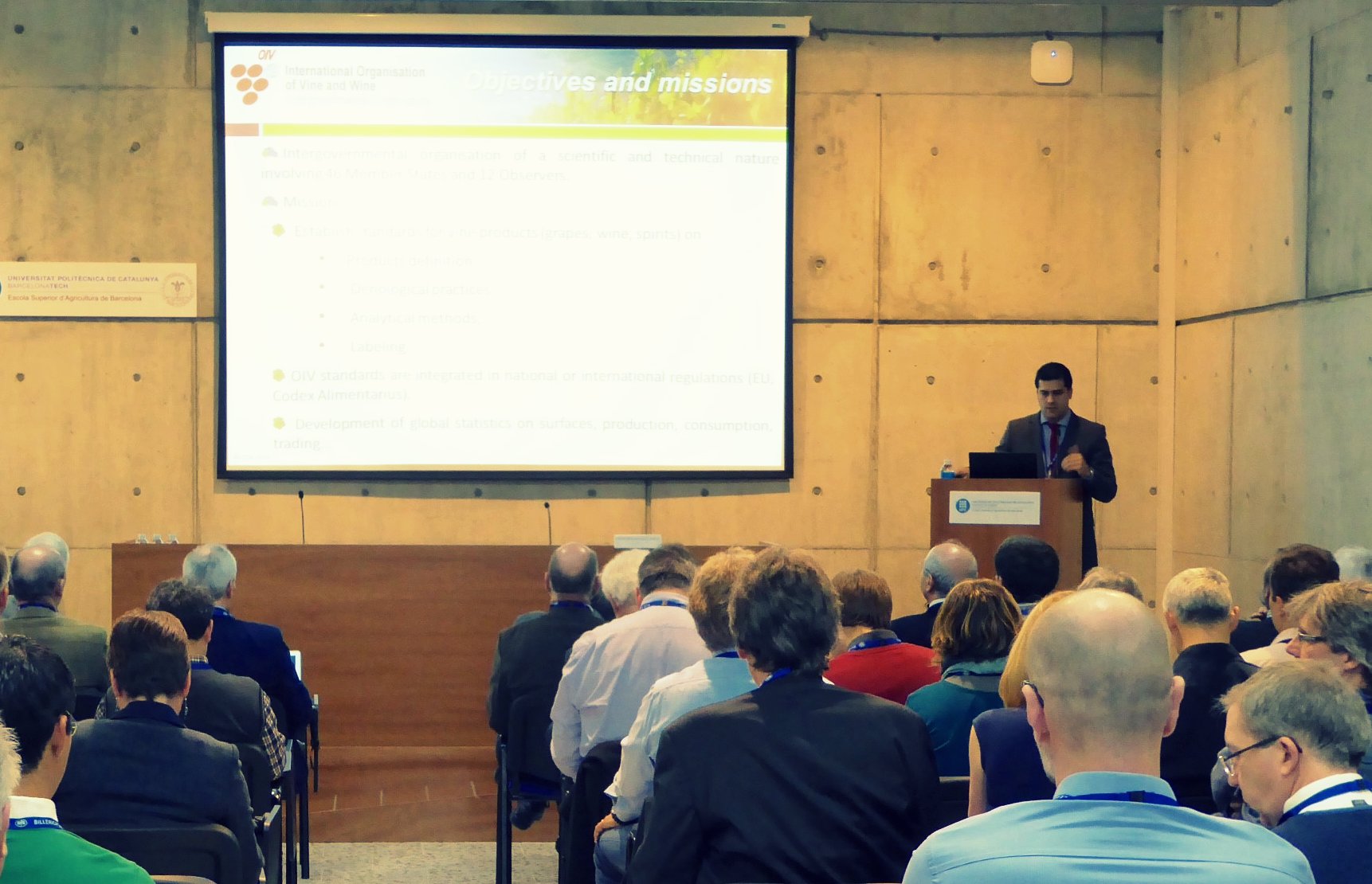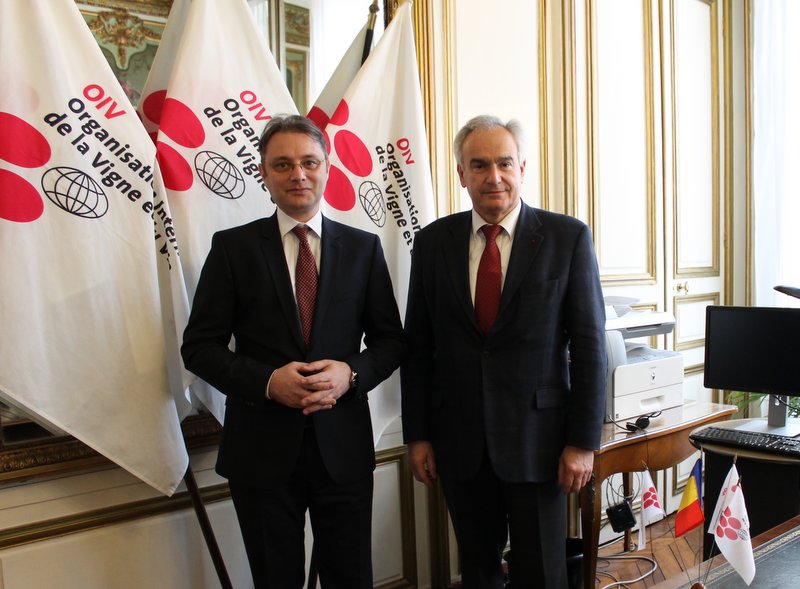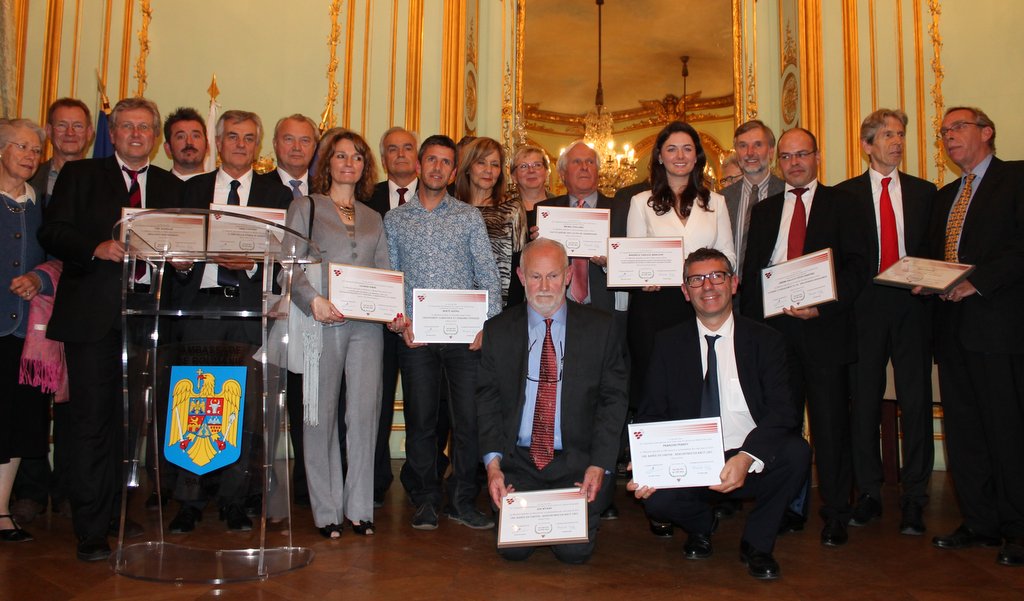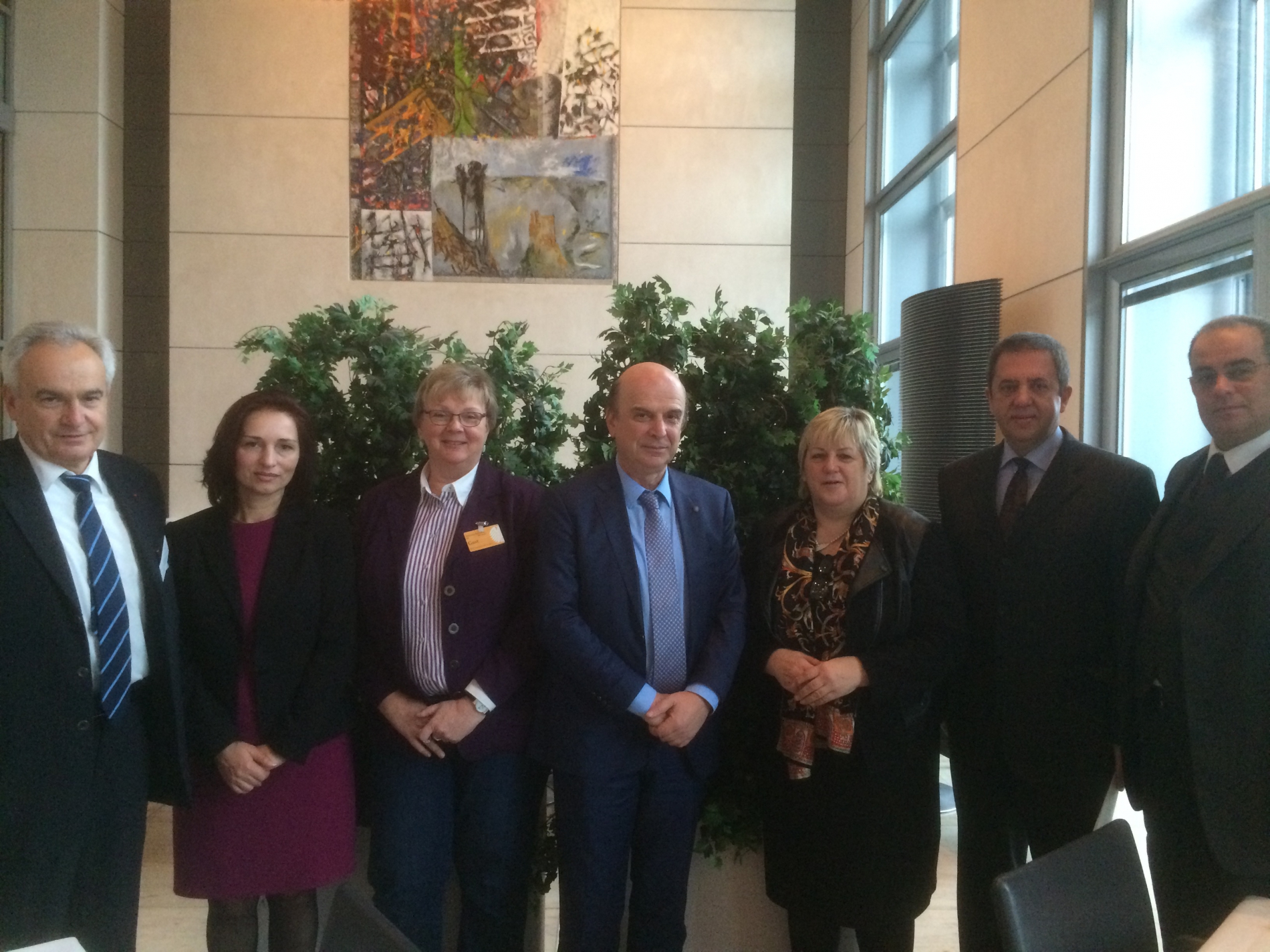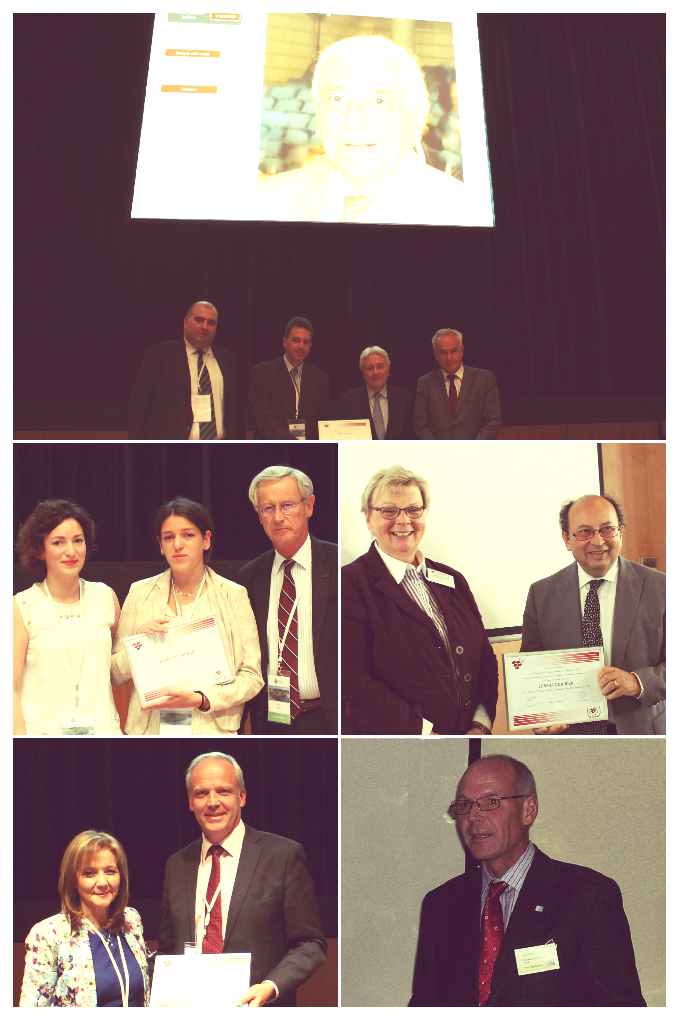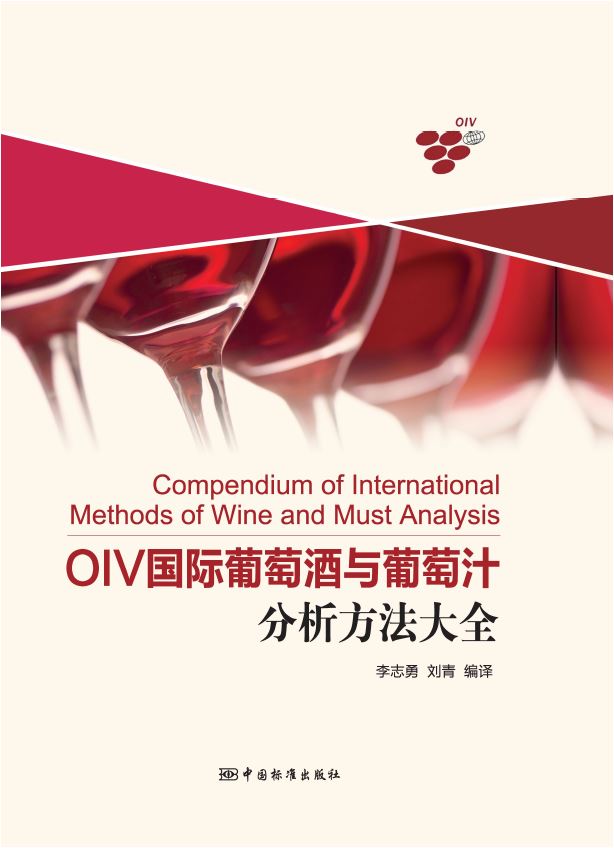04 мар 2016
After recalling the recent developments in Bulgarian viticulture and indicating the strategic geographical positioning of Bulgaria, Ms Taneva assured Jean-Marie Aurand of the support of the Ministry and of the National Vine and Wine Chamber in the organisation of the OIV Congress and General Assembly.The Director General thanked Ms Taneva for this proposal and specified that it would be submitted to the Executive Committee on 16 April so that a decision may be taken.
29 фев 2016
In response to the invitation of AREV President Sergio Chiamparino, Jean-Marie Aurand spoke at a round table dedicated to "European viticulture in the international market".On this occasion, the Director General praised the signing of the agreement between the OIV and AREV (an OIV Observer), which marks a new dynamic of collaboration, and expressed a desire for AREV representatives to actively participate in the work of the OIV carried out within the different commissions.AREV brings together 70 European vitivinicultural regions. Its mission is to promote the common interests of wine-producing regions within the European and global economy.
18 фев 2016
During an interview with Yann Juban, Assistant to the Director General of the OIV, Eduard Grama recalled the importance that he attaches to the vitivinicultural sector, having managed a renowned winery in Moldova himself.He praised the good relationship that exists with the OIV and clearly insisted on the need to develop the exchange of expertise with the OIV scientific and technical network. This strengthened involvement will entail the regular participation of experts and the undertaking of the technical workshops project to the advantage of the Moldovan sector, in cooperation with the National Office for Vine and Wine, as was emphasised by its Director, Mr Dumitru Munteanu, who took part in the meeting.Yann Juban expressed his satisfaction regarding the organisation of the contest in Chisinau, which fully respected the OIV Patronage regulations and made it possible to see the qualitative evolution of Moldovan vitivinicultural products within the context of investments made in reforming the sector. Modelled on an event that took place at the OIV headquarters several years ago, a project for the presentation of Moldovan wines in Paris was also envisaged with the Minister.
17 фев 2016
One of the central themes of this conference was the integrated management of pests and diseases based on the development of new precision technologies for the control of pesticide use, protecting food safety and promoting sustainable development in the vitivinicultural industry. The OIV was represented by the Head of the Viticulture Unit, Mario de la Fuente, who gave a presentation on the actions that are carried out within the "Viticulture" Commission in relation to the reduction and reasoned use of pesticides in the vineyard.Mario de la FuenteThe conference, presided over by the Director General of the Barcelona School of Agricultural Engineering (ESAB), was attended by over 60 speakers from many research centres and/or universities the world over, numerous representatives from the main producers of phytosanitary products and pesticides and manufacturers of application machinery, students, etc., thus bringing together almost 200 people each day.
The work was organised according to diverse thematic areas: Sprayer performance/Quantifying spray parameters and standards; Operator training on phytosanitary products; Biological efficacy of spraying; Precision application; Reducing off-target exposure; Spray physics and spray droplets and Application to tree and bush crops.In total, 12 posters, 45 oral communications and 3 opening addresses highlighted the existing problems and challenges, while at the same time seeking to set the necessary bases for scientific and technological advances in pesticide application. These debates essentially contributed to the technological transfer of this progress for the vitivinicultural sector and, especially, to sustainability and integrated management.The new challenges and concerns faced by the vitivinicultural sector are also of significant concern to the OIV. Strong evidence of this is the important presence of the promotion of sustainable viticulture (which affects pesticide management, among other factors) within one of its five strategic axes for the 2015-2019 Strategic Plan. As part of its commitment to sustainability, the OIV has been working on various resolutions since 1997: on integrated production (VITI 1/1999; CST 2004); on the preservation of biodiversity (VITI 01/2002); on organic production (ECO 460/2012) and, of course, sustainable production (CST 2004; CST 2008 and VITI 422/2011). Similarly, the Organisation has worked on the management of different pests and diseases such as, for example, phytoplasmas (VITI 3/2006) or trunk diseases (VITI 2/2006).In addition, the OIV has adopted three resolutions on maximum residue limits for pesticides. Two of these encourage the creation of a directory of official lists of Member States or other international organisations with maximum residue limits (MRLs) for grapes (VITI 01/2007) and wine (OENO 14/2006), while the other resolution is on the adoption of a standardised methodology for the determination of pesticide residues in wine by an extractive method (OENO 436/2012). The Vine Protection and Viticultural Techniques (PROTEC) Expert Group is continuing to work on different challenges intrinsically linked to sustainability, integrated management or the application of phytosanitary products, through various actions:
- General principles for sustainable viticulture. Environmental, social and economic aspects (CST 12-518). Practical recommendations (CST 13-530).
- Reduction or reasonable use of pesticides in viticulture. During these conferences, the preliminary results of a questionnaire carried out on Member Countries with regard to pesticide use were presented.
- Overall harmonisation of the MRLs and protocols for pesticide application. It is extremely advisable that the protocols for the use of pesticides are standardised and further harmonisation of MRLs is sought for the active substances used in viticulture the world over.
09 фев 2016
Jean-Marie Aurand praised the quality of the relationship between Romania and the Organisation, which is rooted in over 90 years of common history, given that Romania was one of the founding members.The Romanian delegation is very active within the OIV. Romania hosted the 2013 Congress in Bucharest and last year the OIV Awards ceremony was held at the Romanian Embassy in Paris.H.E. Mr Luca Niculescu confirmed the strong interest that his country has in the work of the Organisation, at a time when the Romanian vitivinicultural sector is undergoing an extensive process of modernisation.It is within this context that Romania proposes to organise a presentation of its wines at the OIV headquarters this year.
25 янв 2016
This work will make it possible to very quickly establish the launch of the new OIV website, access to the scientific and technical heritage of the OIV via the digitisation of its Bulletin and the rationalisation of the working structures (expert groups) adapted in accordance with the Strategic Plan. "Sustainable development, climate change and the expectations of consumers and citizens have become inescapable for an increasingly globalised vitivinicultural sector," Jean-Marie Aurand recalled, noting that the OIV needed to be at the centre of these concerns. To this end he confirmed that, alongside traditional subjects relating to technical standards and good practices, the OIV was going to develop its work with regard to environmental issues within a new structure specifically dedicated to this purpose.
From April 2016, a new Exert Group known as "ENVIRO" will address, in a multidisciplinary manner, the problems with respect to sustainable development and climate change in order to develop a comprehensive and consistent approach.This means promoting vitiviniculture that is more competitive thanks to innovations and the adding of value to products, yet also more sustainable. After having praised the delegates and the representatives from the Diplomatic Corps, whose high level of attendance demonstrated the attachment of OIV Member States to the Organisation's activities, Jean-Marie Aurand thanked the experts and professionals who contribute to the OIV's expertise and participate in promoting its actions. OIV President Ms Monika Christmann also expressed her desire to move forward in 2016 with the dossiers currently being reviewed by the OIV, as well as her delight at being able to act together with the new Commission and Sub-Commission Presidents elected in 2015. She reiterated the importance of maintaining high scientific and technical standards, which allow the OIV to fully play its role as a reference for the vitivinicultural sector, particularly with regard to the Codex Alimentarius. The year 2016 will also see the OIV World Congress of Vine and Wine and General Assembly held in Brazil for the first time, in Bento Gonçalves on 24-28 October 2016.
20 янв 2016
The increase in the number of works presented to the OIV Award Jury is related not only to the growth in worldwide literature about vine and wine by many authors, but also the significant international recognition of the OIV Awards : a benchmark in a sector which continues to grow and develop. For information on the Award Jury and the OIV Awards : Download the document
- What does the Award presented by the Award Jury provide?
- What are the categories specified by the Award Jury?
- What are the terms and conditions for submitting a work?
18 янв 2016
They also met with the German Federal Minister for Food and Agriculture, Christian Schmidt. Monika Christmann and Jean-Marie Aurand had several meetings with the Ministers and representatives for the OIV Member States present in Berlin. During a breakfast in the parliament building at the initiative of Ms Kordula Kovac, member of the German Bundestag (national parliament) and also President of the "Wine Group", the OIV President and Director General met with Mr Edmond Panariti, Albanian Minister for Agriculture. The Minister showed a keen interest in the OIV and its missions at a time when Albania wishes to revive its wine production and modernise the sector.
23 дек 2015
In July, Claudia Quini, the then President of the OIV, gave an award to Dr Karl-Heins Wilms (picture: Michael Koehler received the award on behalf of Dr Karl-Heins Wilms), who has devoted his professional activity to the wine sector for more than 20 years as the Head of the German delegation of the OIV. She highlighted the exemplary nature of the German participation in the OIV which, in this period, has hosted two world congresses and had two presidents of the Organisation. Mr Yves Bénard, Vice-President of the OIV, paid tribute, posthumously, to his Italian oenologist colleague, Professor Roberto Ferrarini. He was the Director of Research and Director of the departments of Development and University Research; a professor on the viticultural and oenological sciences course at the University of Verona and a member of the Italian Academy of Vine and Wine; as well as a member of the Italian OIV delegation on behalf of the Ministry of Agriculture, notably as part of the "Oenology" Commission and the "Technology" Expert Group. Mr Jean-Marie Aurand, Director General of the OIV, gave a posthumous award to Mr Serge Hochar, who was involved in OIV activities for 20 years and was a major player in the renovation and development of Lebanon's wine sector. He was one of the architects of Lebanon's wine legislation established in 2000, Founder and President of the Union Vinicole du Liban and, more recently, President of the National Institute of Vine and Wine. He successfully positioned Lebanese wines on the international stage, a tireless ambassador dedicated to his passion and vision for his country's viticulture. In October, the President of the OIV, Monika Christmann, presented the OIV Merit Award to Jean-Luc Dairien, currently the Director General of the French National Institute of origin and quality (INAO). She stressed Mr Dairien's contribution to the vitivinicultural sector both at the national level in his work as the ONIVINS Director as well as in his devotion to the OIV's “Economy and Law” Commission for ten years as its Scientific Secretary and President. Finally, the OIV also granted its Merit Award to James Finkle, who died in September 2015 before receiving this recognition. He chaired the International Federation of Wines and Spirits (FIVS) for nearly 17 years. Under his leadership, the Federation has become the representative of the wine sector, particularly as an active observer with the OIV or Codex Alimentarius. The OIV pays tribute to the memory of a passionate man who devoted himself to the development of vitivinicultural activity around the world.
10 дек 2015
In the context of the relationship that the OIV General Secretariat has enjoyed with the People's Republic of China for many years, the OIV is pleased to announce the translation and publication of the OIV Compendium of International Methods of Analysis of Wines and Musts into Chinese [pp.1-292] [pp.293-595] [pp.596-830].In 2013, during the various meetings between the Guangdong Inspection and Quarantine Technology Center (IQTC) and the China National Research Institute of Food and Fermentation Industries, the heads of these Chinese organisations had made the proposal to translate the Compendium of International Methods of Analysis of Wines and Musts . These directors had also at the time been invited to participate in the meetings of the "Methods of Analysis" Sub-commission.This publication is of great importance given that the responsibilities of the Inspection and Quarantine Centers include control operations for products imported into China. As such, the translation of the OIV Compendium into Chinese is a step closer towards international recognition of the methods of analysis adopted by the OIV.The Compendium of International Methods of Analysis of Wines and Musts was published for the first time in 1962. It has been republished and updated regularly, integrating on a yearly basis the complementary methods established annually by the "Methods of Analysis" Sub-Commission and approved by the General Assembly.The Compendium plays a key role in standardising methods of analysis. Many wine producing countries have introduced its definitions and methods into their own regulations. Furthermore, certain bilateral agreements relating to the wine trade recognise that the methods of analysis published by the OIV prevail as reference methods for the determination of the analytical composition of wine as part of inspection procedures and thus contribute to facilitating international trade.The OIV would especially like to thank the heads of the Guangdong Inspection and Quarantine Technology Center for their work and commitment in carrying out this important task of translating the OIV Compendium of International Methods of Analysis of Wines and Musts .
